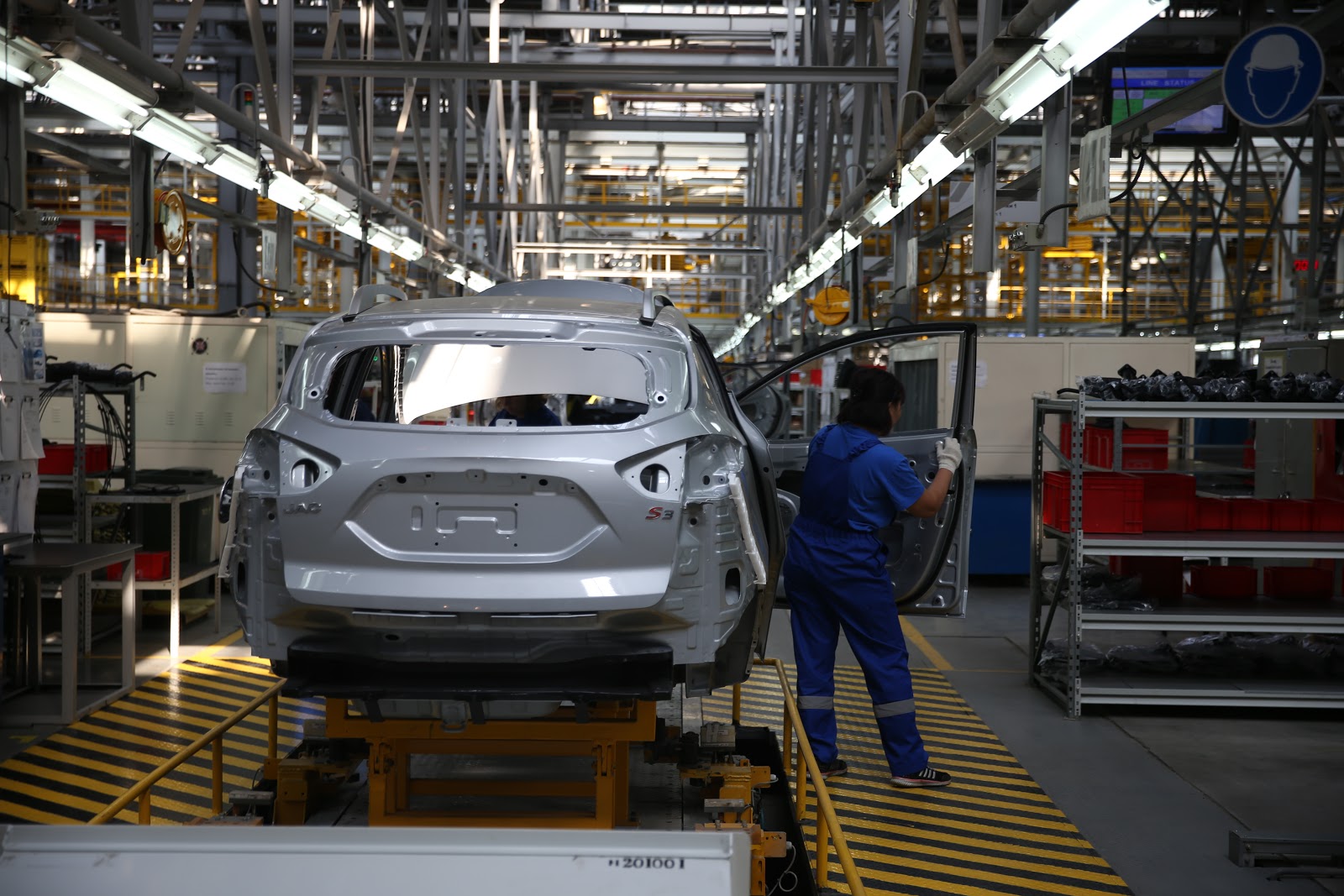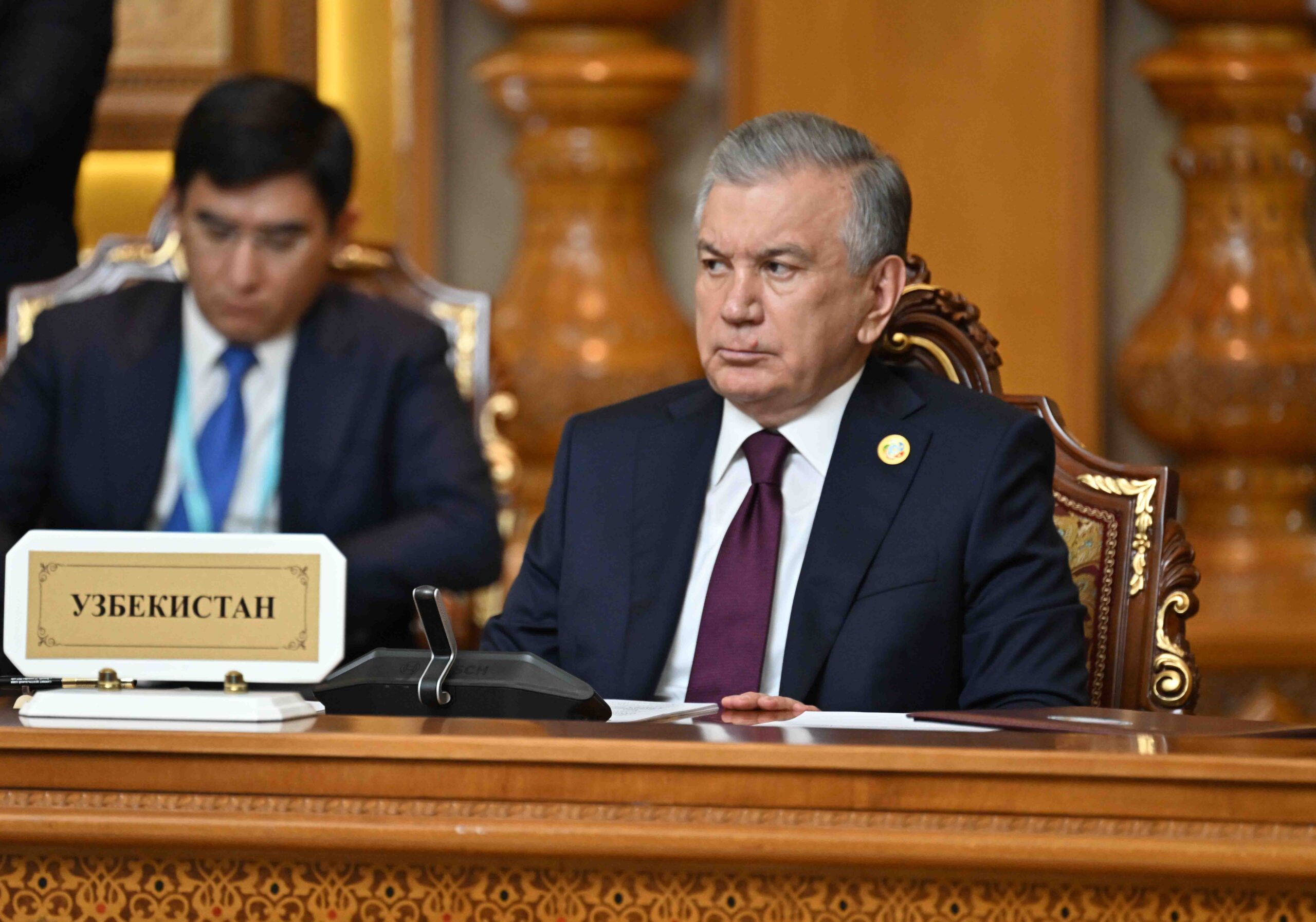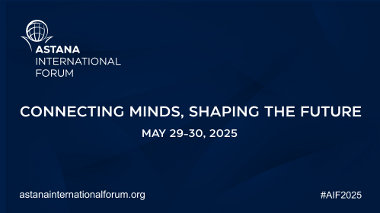ASTANA – Industrial cooperation is becoming a new trend in regional collaboration in Central Asia, Kairat Nurtazin, a senior expert of the Institute of Foreign Policy Studies, told The Astana Times, as the five leaders of Central Asian nations gathered in Dushanbe on Sept. 15 for a consultative meeting to explore regional cooperation and additional efforts toward enhancing the region’s self-determination. The meeting was also attended by the President of Azerbaijan Ilham Aliyev as a guest of honor.

Kazakhstan and Uzbekistan launched Chevrolet ONIX car production as well as household appliances and elevator production. Photo credit: primeminister.kz.
The agenda of the meeting included a wide range of issues related to regional cooperation, including trade, investment, energy, transportation, security, and culture. The heads of state also discussed current regional and international issues of mutual interest.
In recent years, the region has been making concerted efforts to assert its own interests and voices, independent of external influence. This drive has gained significant momentum since Shavkat Mirziyoyev assumed power in 2016, following the death of his predecessor, Islam Karimov, who had favored a more isolationist stance.
The series of consultative meetings began in Astana in March 2018. The second meeting took place in Tashkent in November 2019, followed by a gathering in Turkmenbashi in August 2021, which was delayed due to the pandemic. The fourth meeting took place in Cholpon-Ata in Kyrgyzstan in July of the previous year.

President Tokayev proposed to host a Dialogue on Security and Cooperation in Central Asia in Kazakhstan in 2024. Photo credit: akorda.kz.
“During this time, there has been a noticeable increase in regional cooperation in Central Asia, buoyed by support from both political and business sectors,” as mentioned by Nurtazin.
Nurtazin highlighted the crucial agreements reached during the Cholpon-Ata meeting, where the heads of state signed key documents such as a road map for regional cooperation for 2022-2024, an outline for multilateral interaction among Central Asian states, and the Green Agenda for the Central Asia regional program. According to him, these documents collectively advance the reality of regional integration.
Speaking at the fifth meeting in Dushanbe, President Kassym-Jomart Tokayev emphasized that the coming decade would be a “defining one” for the region.
“It falls upon us to seize this historic opportunity fully. The immediate priority is to optimize our economic capabilities and potential,” stated the Kazakh leader.
The significance of the fifth consultative meeting was further accentuated as it marked the fifth anniversary of the establishment of this consultative forum.
Trade turnover grows
President Tokayev noted that in the past five years, intraregional trade grew by an impressive 80% to $10.6 billion.

During the meeting, President Tokayev said Kazakhstan is ready to share the digital solutions, a sector where the nation has made a leap forward in recent years. Photo credit: akorda.kz.
Data from the Bureau of National Statistics indicates that in the first six months of 2023 alone, Kazakhstan’s trade with other Central Asian states amounted to $3.7 billion. In 2022, that figure was $8 billion—25% higher than in 2021. According to the Kazakh Ministry of National Economy, exports contributed $5.7 billion, while imports accounted for $2.3 billion.
Kazakhstan’s trade relationship with Uzbekistan is especially significant, making up more than 60% of its total trade with Central Asian countries. Kazakhstan mainly exports wheat, oil, and metal products to Uzbekistan, while importing cotton, textiles, and agricultural goods.
Expressing optimism, President Tokayev believes the five nations can elevate their trade turnover to $15 billion in the near term. To achieve this goal, he emphasized the importance of removing current trade barriers, shifting away from protectionist policies, and establishing transparent and stable trade conditions.
“Mutually beneficial trade and economic cooperation is consistently expanding. Business-to-business contacts have intensified, and the number of joint ventures is growing. Large regional projects not only bring tangible mutual benefits, but also reshape the entire configuration of the Central Asian economy,” stated Tokayev.
Nurtazin also touted ample potential to develop trade relations, noting that 98.7% of intraregional trade turnover is made up of trade between Kazakhstan and Uzbekistan with other countries in the region.
“Simultaneously, the establishment of an International Center for Industrial Cooperation on the Kazakhstan-Uzbekistan border and an Industrial Trade and Logistics Complex on the Kazakh-Kyrgyz border is expected to greatly enhance efforts to increase bilateral trade. Additionally, ongoing initiatives, such as the development of border trade zones between Uzbekistan and Tajikistan and Turkmenistan, which commenced last year, will contribute to fostering trade and economic cooperation in the region,” said the expert.
Increased industrial cooperation
Nurtazin views the growing focus on industrial cooperation as a new trend in regional processes.

President of Uzbekistan Shavkat Mirziyoyev noted the construction of new transmission lines and the utilization of the significant potential for hydropower development should be important areas of cooperation. Photo credit: akorda.kz.
“Uzbekistan is a leader in this area, having launched car assembly projects in Kazakhstan and reached agreements to establish similar production facilities in the Kyrgyz Republic and Turkmenistan. The construction of the International Center for Industrial Cooperation will create a regional production hub on the Kazakhstan-Uzbekistan border,” explained Nurtazin.
According to the Kazakh Ministry of Trade and Integration, the international center will host enterprises that specialize in the deep processing of raw materials, which will enable the production of high-quality products. The list of investment projects formed by the Kazakh side includes 63 projects in textile, food, pharmaceutical and machine-building industries.
In terms of promising areas for industrial cooperation, Uzbek President Shavkat Mirziyoyev underscored the production of mineral fertilizers, polymers, finished metal products, assembly of agricultural machinery, and production of finished textile and food products for export to other countries.
Nurtazin pointed out that, in addition to governmental leadership, entrepreneurs are also eager to forge robust partnerships. This is evidenced by the record volume of transactions concluded during state visits.
“For example, the first three Kazakh-Uzbek business forums resulted in the signing of trade and investment agreements worth $1.5 billion. The fourth forum held last December saw agreements totaling more than $3 billion,” according to Nurtazin.
Transport and logistics
The leaders voiced the need to intensify cooperation in transport and logistics, as bottlenecks in transport routes hold back intraregional trade.
Tokayev said the countries may benefit from the development of the Trans-Caspian International Transport Route, which has received growing attention from countries in the region and beyond, including the European Union.
“Kazakhstan aims to accelerate the implementation of a number of major projects that will contribute to the expansion of economic ties with its closest partners. These include the Dostyk-Moyinty, Bakhty-Ayagoz, and Darbaza-Maktaaral railroad projects, as well as the Zhanaozen-Turkmenistan border highway. Overall, Kazakhstan intends to strengthen its position as a transit hub in Eurasia,” said Tokayev.
Mirziyoyev also highlighted the need to enhance efforts in this area, pointing out that due to the geographical distance from the main foreign markets, the transportation costs in the region account for up to half of the final cost of goods.
“At the same time, the world average does not exceed 11%. As a result, our economies are forced to bear a transport load two to three times greater than in developed countries,” he said.
The Uzbek leader suggested developing an agreement on transport and transit in Central Asia to formulate specific mechanisms for promoting effective transport corridors to enter the markets of China, the countries of South Asia and the Middle East, and the EU.
Positive forecasts
Nurtazin expressed optimism regarding the increasing speed of regional cooperation.
“Central Asian integration is currently progressing towards the formalization of regional cooperation mechanisms. This includes initiating industrial cooperation processes and establishing transport and logistics corridors to elevate economic collaboration among Central Asian countries,” said Nurtazin.
He also commended efforts to revive cultural and humanitarian exchanges, simplify mutual travel regulations, and foster closer ties between people.
“These developments signal a significant step toward enhancing regional cooperation and integration in Central Asia,” he added.
Experts, however, note that there are many challenges facing the region, including border disagreement, shared security concerns—particularly regarding Afghanistan’s unstable situation—and the management of water and other natural resources.


